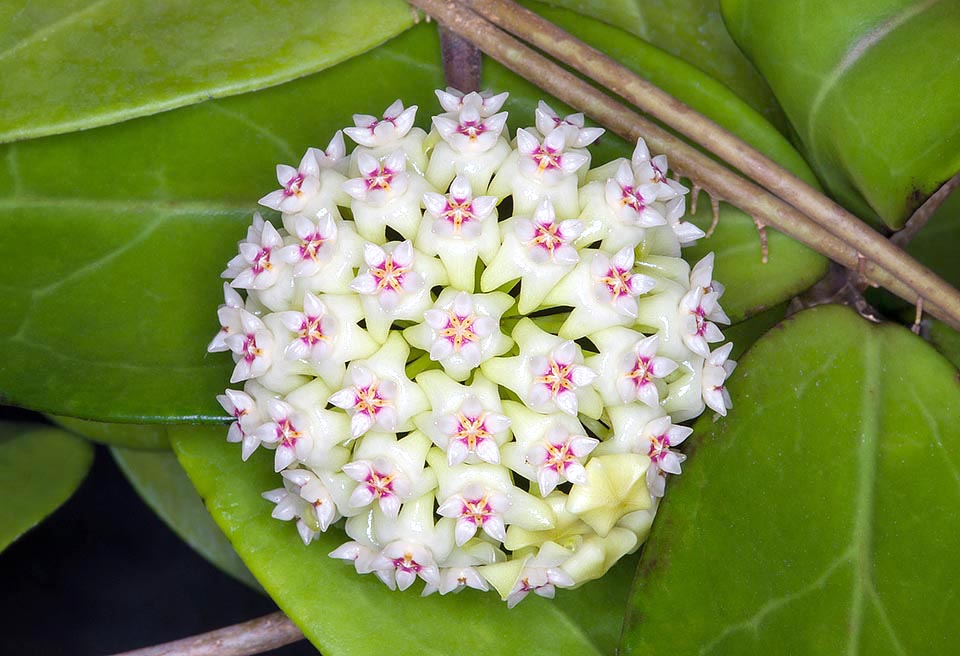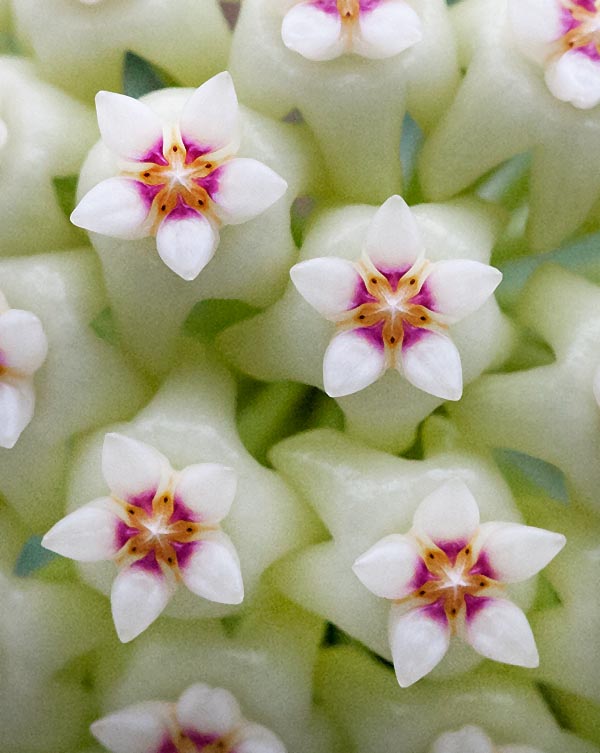Family : Apocynaceae

Text © Pietro Puccio

English translation by Mario Beltramini
The species is native to Indonesia, Malaysia and Thailand where it grows in the humid forests at low and medium altitudes.
The genus is honoured to Thomas Hoy (ca. 1750-1822), botanist and curator of the gardens of the Duke of Northumberland; the specific name is the Latin adjective “acutus, a, um” = acute, acuminate, with reference to the apex of the leaf.

Native to South-East Asia, Hoya acuta is a climber of the humid forests at medium and low altitudes. The umbel inflorescences count even 45 corollas © Giuseppe Mazza
The leaves are opposite, simple, ovate-elliptic to oblong with acuminate apex and entire margin, rather fleshy, 4-12 cm long and 3-5 cm broad, of glossy intense green colour.

The elegant, perfumed, flowers have about 1 cm of diameter and last 4-5 days © Giuseppe Mazza
Umbel axillar inflorescences bearing even more thatn 45 flowers, of about 1 cm of diameter, of white or greenish white colour with pink centre, or pink, pleasantly perfumed, lasting on the plant 4-5 days; the peduncles are persistent and can bloom again, consequently are not to be cut after the blooming. The fruits are fusiform follicles containing numerous seeds provided at one extremity with a tuft of silky hairs that favour their dispersion with the wind.
It reproduces by seed, but usually by cutting, with 2-3 nodes, in very sandy loam or agriperlite maintained humid at a temperature of 26-28 °C, or by air layering; the first blooming occurs after 2-3 years.
It is a species much discussed on the point of view of the nomenclature, as there is no agreement if to consider it a species or a synonym; floriferous and of easy cultivation, cultivable in open air in the tropical and humid subtropical climate zones in very luminous position, even with some hours of direct sun in the morning; it stands dry periods, but grows best with average high and constant atmospheric humidity.
Elsewhere, it can be cultivated in pot, on appropriate supports, to be sheltered in winter in a particularly luminous ambient with lowest temperatures not under the 15 °C; a good daily temperature range favours the blooming.
It needs a very aerated and draining substratum, rich of organic substance, neutral or slightly acidic, and regular waterings in summer, but without stagnations and allowing the substratum to dry up before watering again, spaced in winter, in way to keep it slightly humid; useful are the nebulizations, in presence of dry air and of high temperatures, with non calcareous water at ambient temperature, rainwater, demineralized or by reverse osmosis, also for avoiding unaesthetic spots on the leaves.
They have selected a particularly ornamental variety with creamy white variegated leaves.
→ To appreciate the biodiversity within the APOCYNACEAE family please click here.
